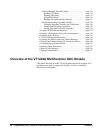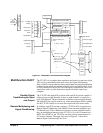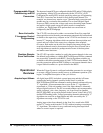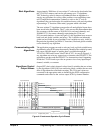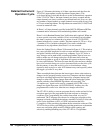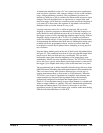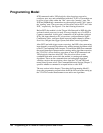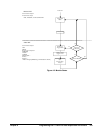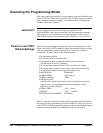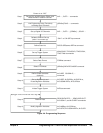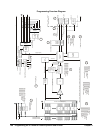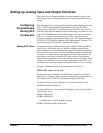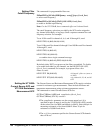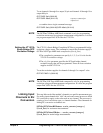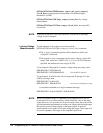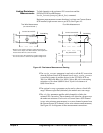
104 Programming the VT1422A for Data Acquisition and Control Chapter 4
Executing the Programming Model
This section shows the sequence of programming steps that should be used
for the VT1422A. Within each step, most of the available choices are shown
using command sequence examples, with further details available in the
Command Reference Chapter 7.
IMPORTANT! It is very important that, while developing an application, the
SYSTem:ERRor? query be executed after each programming command.
This is the only way to determine if a programming error has occurred.
SYST:ERR? returns an error number and description (or +0, "No Error").
Power-on and *RST
Default Settings
Some of the programming operations that follow may already be set after
Power-on or after a *RST command. Where these default settings coincide
with the configuration settings required, there is no need to execute a
command to set them. These are the default settings:
• No algorithms defined
• No channels defined in channel lists
• Programmable SCPs configured to their Power-on defaults
(see individual SCP User’s Manuals)
• All analog input channels linked to EU conversion for voltage
• All analog output channels ready to take values from an algorithm
• All digital I/O channels set to input static digital state
• ARM:SOURce IMMediate
• SAMPle:TIMer 40E-6 (40 µs)
• TRIGger:SOURce TIMer
• TRIGger:COUNt 1
(Note that this default was chosen to make testing data acquisition
scan list easier. For algorithm operation, changing the count to
INFinite is probably desired.)
• TRIGer:TIMer .010 (10 ms)
• FORMat ASC,7 (ASCII)
• SENSe:DATA:FIFO:MODE BLOCking
Figure 4-4 provides a quick reference to the Programming model. Refer to
this along with the “Programming Overview Diagram” to keep an overview
of the VT1422A SCPI programming sequence. Again, when default settings
match the settings desired, that configuration step can be skipped.



